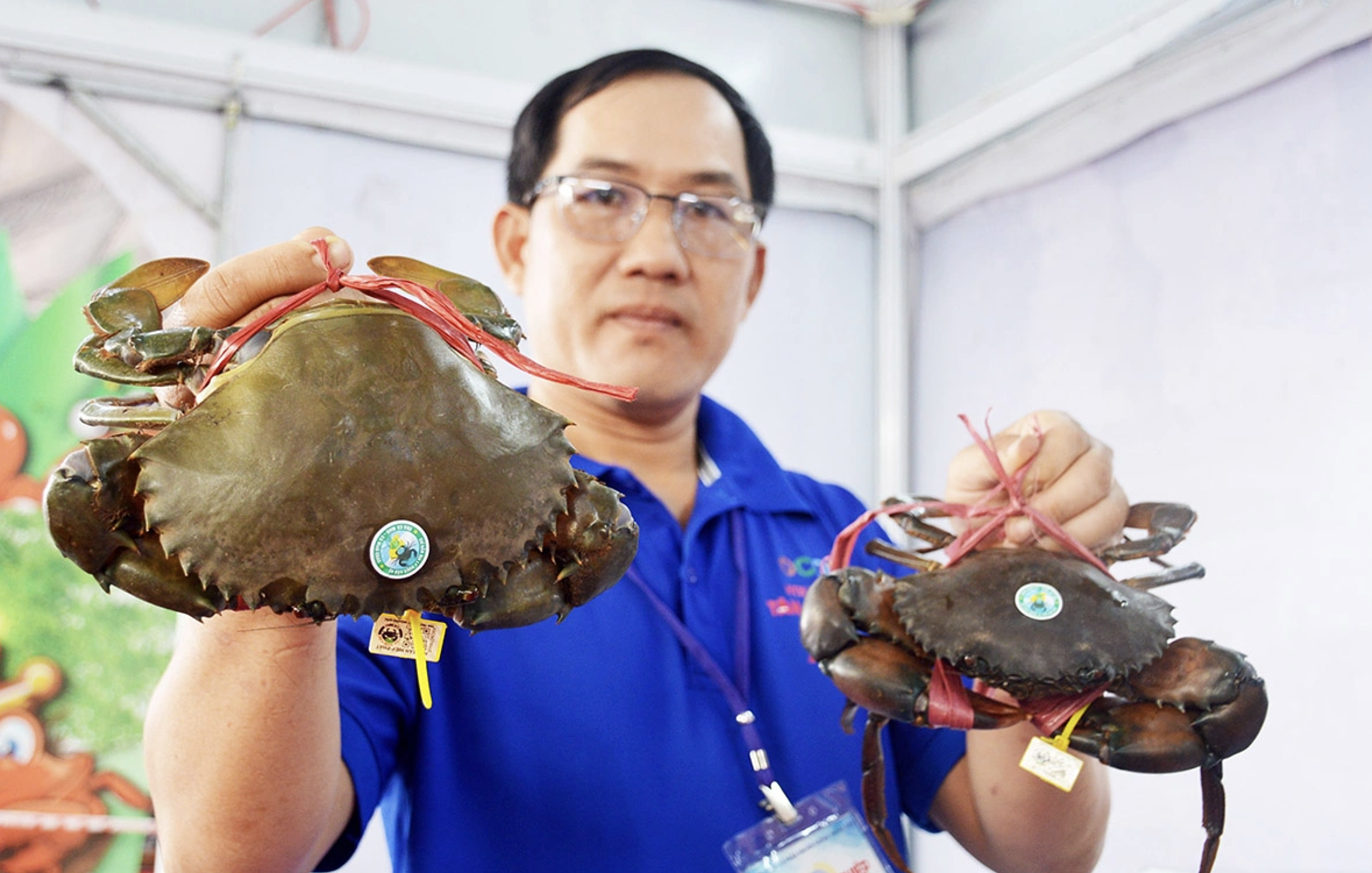According to the Vietnam Association of Seafood Exporters and Producers (VASEP), crab exports maintained steady growth in Quarter II, while swimming crab and three-ridged crab exports saw a slight decline in the final month of the quarter. In the first six months, Vietnamese crab, swimming crab, and other crustaceans reached 25 global markets, with most key markets recording strong growth.
The primary driver was China, a market that favors live Vietnamese crabs, along with stable purchasing power from Japan. Vietnam's crab and swimming crab exports benefit from a competitive edge in quality and being antibiotic-free, strengthening trust in demanding markets. Australia also saw 58% growth in Quarter II after a period of decline, and exports to the EU continued to increase by 71% year-on-year, though slowing compared to Quarter I.
 |
Farmers raising sea crabs in Ca Mau. Photo: An Minh. |
Farmers raising sea crabs in Ca Mau. Photo: An Minh.
Along with the surge in export volume, domestic purchase prices also climbed. In Cai Nuoc (Ca Mau), grade 1 female crabs from the ponds fetched up to 700,000 VND per kg, while grade 2 ranged from 350,000 to 500,000 VND. Grade 1 swimming crabs at the seaport reached 500,000-600,000 VND per kg, and grade 3 ranged from 200,000 to 300,000 VND. Duong Thi Bich Nam, director of Du Thai Binh Co., Ltd., noted that unlike last year when China virtually halted crab imports during the summer, this year shipments to this market have increased significantly. "Wholesale prices for female crabs have risen to 650,000 VND per kg, and meat crabs are 400,000-450,000 VND per kg. Grade 1 crabs must be visually appealing, rich in roe, with only 2-3 crabs per kg," she said.
Despite the high export growth, VASEP warned that businesses still face challenges related to quarantine, farming area codes, and price competition. The association recommended that localities expand the area of standardized farming, invest in cold storage, and logistics to exploit the live crab segment, which has high-profit margins. Businesses should prioritize long-term contracts to avoid being pressured on price during peak season.
Demand is expected to continue to rise in Quarters III and IV thanks to the festive season in China, South Korea, and many Asian countries. VASEP predicts that crab and swimming crab exports could surpass $350 million for the entire year due to rising global demand.
Thi Ha












